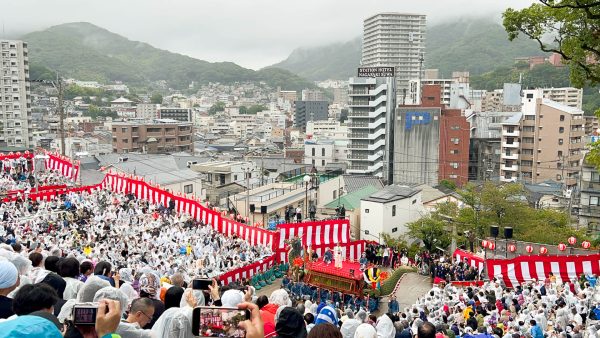OPINION: The university has nickel-and-dimed students for too long
Chloe Almendarez / Hilltop Views
Junior Bryce Johnston sits at a hightop in Munday Library working on assignments and other personal projects. The Munday Library is one of the many facilities students get to appreciate while on campus.
This fall, undergraduate students paid a flat rate of $24,943 in tuition to attend St. Edward’s University. This does not include the price of campus housing, meal plans, textbook fees and the comprehensive fee. For myself, the full cost of one semester at St. Edward’s is $32,033, for a total of $64,066 for one academic year.
On top of this grand total, St. Edward’s students have additional costs to consider: personal needs, bills, groceries and the cost of parking and printing.
To park on campus, students have a few options. For a standard parking pass that allows parking in green and yellow lots, students can pay $310 for the full academic year, or $185 per semester ($370 total). For students who live on campus, the student economy pass — which allows parking in yellow lots only — costs $240 for the full year and $142 per semester ($284 total). There are also daily options: Through NuPark, parking costs $5 a day, and through the city of Austin’s online parking service, Park ATX, on-campus parking is $2 an hour plus transaction fees ($6) with a maximum of 3 hours to park.
With the high prices of parking passes, it seems as though St. Edward’s does not view parking as a necessity for students, but rather a luxury. Austin is not a walkable city and public transportation is not thoroughly accessible, so for commuters and residents alike, having a vehicle is non-negotiable.
When it comes to printing, St. Edward’s has implemented Hoofprints kiosks around campus. When using Hoofprints, students are charged eight cents per page. Students are given $10 on their account at the start of the year, but once that fund runs out, students are responsible for the payments. Students use printing in a variety of ways such as needing a physical copy of a reading, turning in required paper copies, printing test reviews and more, all of which add up financially.
Students enrolled at St. Edward’s should not have to pay extra after their semester bill in order to store their vehicles or print paper. These are implied needs of students, and should be acknowledged as a student right.
These “after-bill costs” of attending St. Edward’s are ultimately a barrier for students. It is already very expensive to be enrolled here, and students already struggle with ways to pay for it. When students are forced to pay more than what they are required to for attendance, St. Edward’s continues to stir conversations around inaccessibility to education, inequity and classism.
Taking a look at how we pay for school with a critical lens, I can’t help but wonder how St. Edward’s ultimately spends our money. When students are asked to pay extra, the value of students’ cost of attendance is called into question.
Currently, St. Edward’s does not have their yearly budget report posted on their website, unlike other universities around the country. Personally, I would like to see financial transparency and learn how exactly the funds are disbursed. After paying $64,000 a year, are students really getting their money’s worth?

Chloe Almendarez is a senior Psychology major with a minor in Education Studies. This is their second year working with "Hilltop Views" as Managing Editor....











